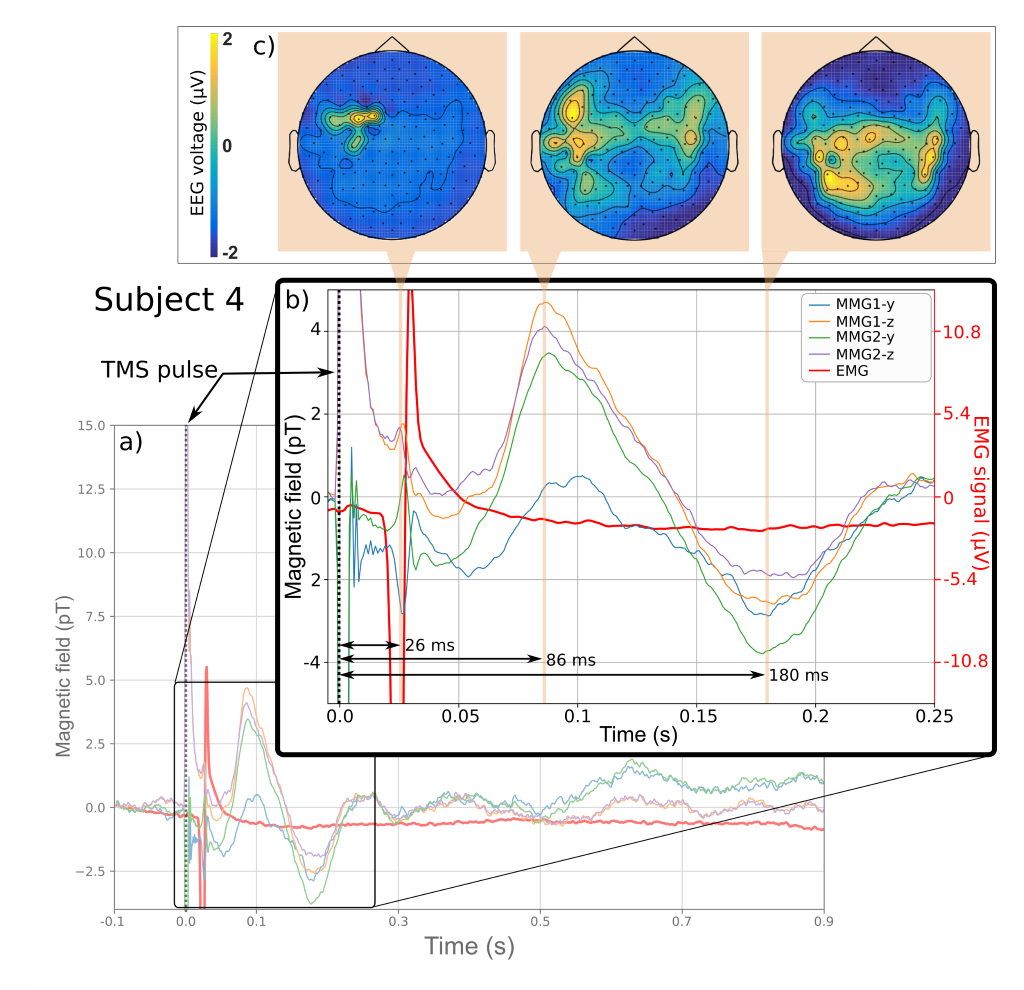High sensitivity magnetometers can detect the small magnetic fields produced by nerve and muscle activity throughout the body. In contrast to electric techniques, these magnetic measurements are non-contact, have good spatial resolution, and are relatively unaffected by the body tissue that surrounds nerves and muscles. However, understanding the source of these fields remains a serious challenge. Furthermore, the target fields are about a million times smaller than the magnetic noise produced by just about everything in modern society, and 10 million times smaller than the Earth’s background magnetic field.
Combining technology to achieve new results
Overcoming these challenges, we measure detailed magnetic activity originating from the human hand[1]. The key advancement is in combining transcranial magnetic stimulation (TMS) with small-sized magnetic shielding. TMS is a technique to stimulate specific regions of the brain to invoke muscle movement. This enables a repeatable measurement that can be performed many times in a short period of time, allowing us to average many trials. In contrast to typical bio-magnetic measurements which utilize a magnetically shielded room, we used a magnetic shield that fit only over the forearm of the subject, enabling us to operate in a typical hospital environment.
Collaboration with doctors at the University hospital has been a critical aspect of our work. Comparing results with simultaneously acquired electromyograms and electroencephalograms, we show how our magnetomyograms can provide a new diagnostic tool for doctors studying neuro-degenerative disease and muscle health. We are currently expanding the number of subjects to validate our clinical results.
Nerve identification
Using TMS with magnetometers arranged to study the central arm (near the elbow), we are working to identify which specific nerves are used to transmit signals to the different hand muscles, and a detailed temporal profile of these signals. This system will also study nerve conduction velocity – a measure of the nerve health. We are also developing a setup to detect magnetic fields from central arm nerves arising from somatosensory stimuli at the hand.

Reference:
[1] G. Z. Iwata, Y. Hu, T. Sander, M. Muthuraman, V. C. Chirumamilla, S. Groppa, D. Budker, A. Wickenbrock. Biomagnetic signals recorded during transcranial magnetic stimulation (TMS)-evoked activity. arXiv:1909.11451, (2019).
